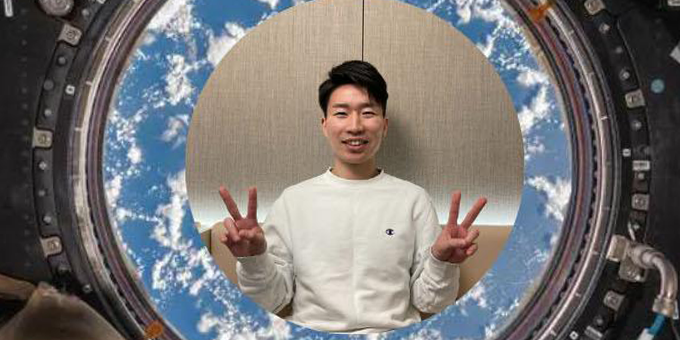What do chopsticks and space robots have in common? Japanese astronauts onboard the International Space Station (ISS) are about to find out.
They’ll conduct the experiment, which was submitted by an Australian university student, as part of the Asian Try Zero-G competition.
The Australian National University (ANU) aerospace engineering student Shingo Nishimoto said he was excited to have his experiment selected by a distinguished panel of space professionals.
“I’m looking forward to observing the rotating motion of chopsticks for a long duration under the zero gravity environment,” Shingo said.
“That experiment will help us to understand whether the theoretical expectation is correct. I believe that the theory can apply to the space robots that manage the angular momentum vector to the robots’ body frame using shape deformation.”
Shingo is a PhD student in the ANU College of Engineering, Computing & Cybernetics, studying Aerospace Engineering under the supervision of ANU Institute for Space (InSpace) Mission Specialist Professor Junichiro Kawaguchi.
Asian Try Zero-G has been created by the Japan Aerospace Exploration Agency (JAXA) to promote crewed space experiment activities aboard the Kibo module of the ISS. The competition is delivered in Australia by One Giant Leap Australian Foundation, with sponsorship from the Australian Space Agency to provide opportunities to students in the Asia Pacific region.
As the winner, Shingo will travel to Japan next year while his experiment is performed aboard the International Space Station by astronauts from JAXA: Japan Aerospace Exploration Agency. The demonstration of the selected space activities will be broadcast live and transmitted to JAXA’s ground station at Tsukuba Space Center, Japan.
Related
- Further information and updates can be found on the One Giant Leap website.
- Department of Industry, Science and Resources: Australian student experiment to be tested by ISS astronauts
- One Giant Leap Radio: Asian Try Zero G program podcast
- Watch: Shingo Nishimoto on Sky News

